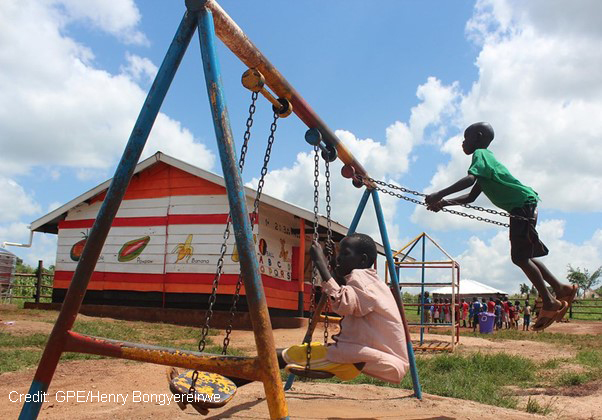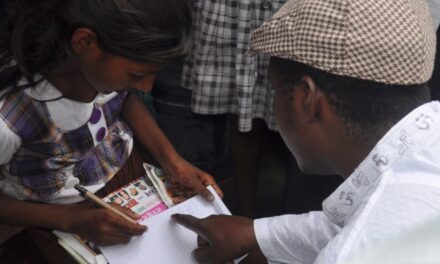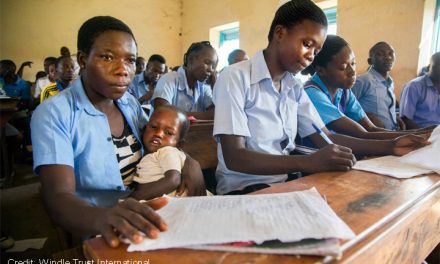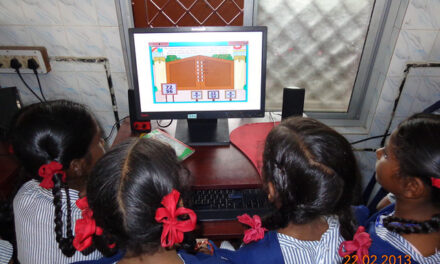This blog was written by Daniel A. Wagner, University of Pennsylvania; Moses Oketch, UCL Institute of Education; and Rachel Hinton, Foreign, Commonwealth & Development Office. The authors will be leading a symposium at the UKFIET Conference on 13 September 2021, 14:45-16:15 titled Learning at the bottom of the pyramid: What’s new and what isn’t?
The United Nations Sustainable Development Goals (SDGs) have placed a high priority on the quality of education — and on learning. This has led to substantial increases in attention to international development assistance for the improvement of education worldwide.
However, the SDGs are mainly normative at a country level – that is, they tend to emphasise averages across nations, with relatively limited attention to variations within countries and to marginalised groups performing at the low end of the distribution. In response, experts from around the world have begun to further explore the scientific, policy and practice tensions of how to improve learning among the most disadvantaged populations in low-income countries (LICs) — those whose learning is at the “bottom of the pyramid” (or LBOP).
International organisations, donor agencies, and many national governments often invoke “bottom of the pyramid” (BOP) populations as the target of their investments — trying to help the poorest of the poor. Still, our understanding of learning seems inadequate to the challenge of ensuring the quality of education for all. The origins of these efforts date back at least to 1990, when the World Conference on Education for All (EFA) in Jomtien, Thailand embraced both access and quality of education and learning. In 2000, these international priorities were reinforced in the UN Millennium Development Goals for 2015, and then with the SDGs, where learning again became a key to the 17 UN goals to be achieved by 2030.
The growth in interest and support of LBOP has raised new challenges, especially due to social changes stemming from the current Covid-19 pandemic, civil strife leading to migration, and increasing economic inequities. Research on learning gaps among the poor in high-income countries has been a longstanding area of interest, along with substantial effort to create measurement tools for diverse populations. Similar interest and measurement tools are being developed in low-income countries, where it is now recognised that student performance needs to be improved substantially to address the current learning crisis, and that prioritising the lowest performers is the fastest pathway to achieving the UN SDG Goal 4.
Even so, the scientific community has, to date, invested only modest effort in understanding and narrowing learning differences and inequalities within LIC populations. While some lessons can be learned from high-income countries, there are also unique issues in developing countries that warrant systematic research on diverse ways to improve learning equity. The overall focus of research on the LBOP is to expand the conversation about learning for all in LICs by bringing greater attention to reducing learning inequalities within countries, while at the same time raising national levels of learning.
Why and how to focus on LBOP?
The structure of many education systems was not initially designed to equip all children with basic skills but rather to prepare a select group of typically advantaged pupils for progression to the next stage of education. With the greatly expanded access to education as part of the UN goals, there has been an even greater increase in the dispersion of pupils’ learning outcomes – raising both inequality and inequity in the form of pyramidal education and learning outcomes.
While reducing inequality in learning levels is desirable, it is especially important to also ‘raise the floor’ of those most in need (see Chapter 3 of IIEP’s ‘Learning at the Bottom of the Pyramid’; and Crouch & Slade, in press). Enabling education systems to make this change requires both diagnosis of the problem and finding solutions that can work at scale, particularly in sub-Saharan Africa and South Asia, where disadvantaged pupils’ learning outcomes seldom meet either national curricular expectations or international benchmarks as provided by studies such as PISA and TIMSS.
Other dimensions of LBOP also need our attention, including the following: Do teachers need different kinds of professional development at the BOP; with the growth of ICTs during the Covid-19 pandemic, how does the digital divide intersect with BOP issues; and are there special considerations among child refugees and those in migration who are living at the BOP? These and other topics are covered in a upcoming volume based on the international LBOP2 conference, coming out this autumn.
Multiple efforts are currently directed to improving learning, from UNESCO’s SDG4 efforts, the World Development Report 2018 analysis of the “learning crisis”, and the work of the RISE Programme (funded by FCDO), that is focused on systems analysis to improve accountability for learning. LBOP complements these efforts by focusing its efforts on the extent to which overall effectiveness can result from an intensified focus on children who are at the bottom of the pyramid. In education systems with extreme heterogeneity in achievement, where variation in prior achievement can be equivalent to five or more grades in one classroom, it is critical to pay much greater attention to those on the bottom of the pyramid.
The LBOP approach draws our attention to the composition of the education systems in terms of who is on target and who is left behind. Is an education system that ‘raises the floor’ more or less desirable than the system that ‘raises the roof’? The LBOP approach is designed to assure that we do not lose sight of those who are most marginalised – for the benefit of all.





